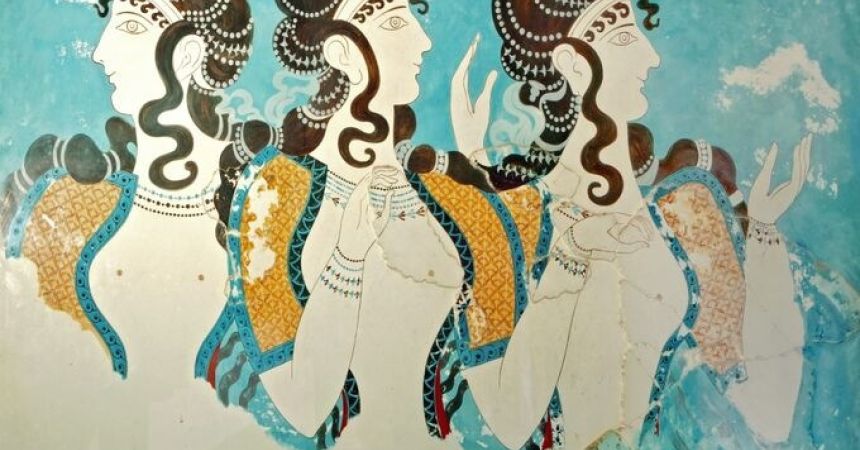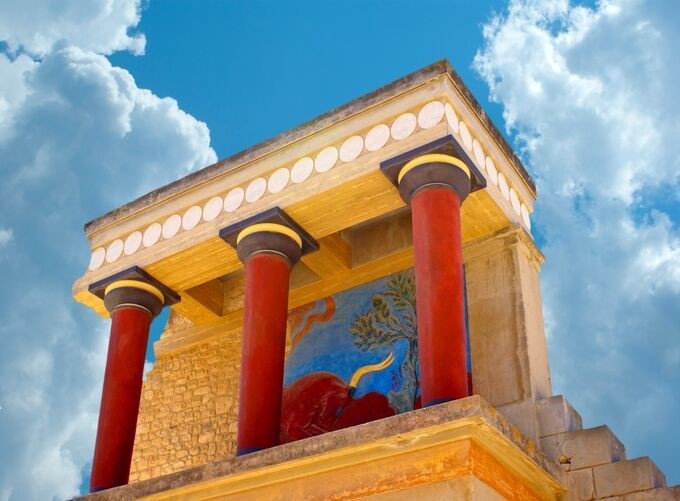
Greek Fashion Trends: Modern Meets Tradition
Greece, a country known for its rich history, stunning landscapes, and vibrant culture, also boasts a distinctive fashion heritage that seamlessly blends traditional elements with contemporary trends. Greek fashion is a reflection of its diverse influences, from ancient mythology to modern global styles. This comprehensive guide explore Greece fashion in detail, covering historical influences, modern trends, key designers, and practical tips for incorporating Greek fashion into your wardrobe.
Introduction to Greek Fashion
Greek fashion is an intriguing blend of history, tradition, and modernity. It reflects the country’s rich cultural heritage and its evolution over centuries. From the ancient draped garments of classical Greece to the contemporary styles embraced by today’s fashionistas, Greek fashion offers a unique narrative that spans millennia.
Historical Influences on Greek Fashion
2.1 Ancient Greece
Ancient Greek fashion was characterized by simplicity, elegance, and functionality. The Greeks valued comfort and ease of movement, which is reflected in their clothing styles.
- Chiton: A fundamental garment of ancient Greece, the chiton was a tunic worn by both men and women. It was made from rectangular pieces of fabric that were sewn or pinned together at the shoulders and waist. The chiton was typically made of linen or wool and could be worn in various lengths.
- Himation: Often worn over the chiton, the himation was a cloak or shawl that draped over the shoulders and could be wrapped around the body for warmth or modesty. It was usually made of heavier materials and was an important part of Greek attire.
- Peplos: Worn by women, the peplos was a long, draped garment that was fastened at the shoulders with pins or clasps. It was often decorated with patterns or embroidery.
- Tunic and Cloak: Men often wore a short tunic (chiton) and a cloak (himation) over it. The tunic could be sleeveless or have short sleeves, and the cloak provided additional warmth and protection.
Ancient Greek fashion also included elaborate accessories such as jewelry, belts, and sandals. Women adorned themselves with necklaces, bracelets, and earrings, while men wore simpler accessories.
2.2 Byzantine Influence
The Byzantine Empire, which succeeded the Roman Empire and spanned from the 4th to the 15th centuries, had a significant impact on Greek fashion. Byzantine fashion was characterized by its opulence, with richly embroidered fabrics, intricate patterns, and the use of luxurious materials.
- Byzantine Tunics: The tunics of the Byzantine period were often made from silk and adorned with elaborate embroidery and jeweled elements. They were worn by both men and women and were an indication of social status.
- Chasubles and Stoles: Religious garments, including chasubles and stoles, were richly decorated and often made from expensive fabrics. These garments were worn by clergy and were a symbol of their religious and social standing.
- Headgear: Byzantine headgear, such as the crown and diadem, was elaborate and often encrusted with jewels. This headgear was a symbol of authority and power.
2.3 Ottoman Influence
The Ottoman Empire’s influence on Greek fashion is particularly notable during the period of Ottoman rule, which lasted from the 15th to the early 19th century. Ottoman fashion introduced new styles and fabrics to Greece.
- Kaftans: The kaftan was a long, flowing robe worn by both men and women. It was often made from luxurious fabrics and featured intricate patterns and embroidery.
- Fes and Turbans: The fez, a red hat with a tassel, and the turban were popular headwear options during the Ottoman period. These headpieces were often worn as part of traditional dress.
- Belly Dance Costumes: The influence of Ottoman culture also brought about the popularity of elaborate belly dance costumes, which were characterized by their vibrant colors, shimmering fabrics, and intricate beadwork.
Modern Greek Fashion
3.1 Contemporary Trends
Modern Greek fashion has evolved significantly, influenced by global trends while maintaining elements of traditional Greek style. Today’s fashion scene in Greece is a dynamic mix of haute couture, ready-to-wear collections, and street fashion.
- Minimalism and Elegance: Contemporary Greek fashion often embraces minimalist designs, focusing on clean lines, elegant silhouettes, and high-quality fabrics. This approach reflects the timeless elegance of ancient Greek attire.
- Modern Drapery: Modern Greek designers frequently incorporate draped elements in their collections, paying homage to the traditional chiton and himation while adding a contemporary twist.
- Color Palette: Greek fashion today often features a color palette inspired by the natural beauty of Greece, including hues of blue, white, and earthy tones that reflect the Aegean Sea and the Greek landscape.
3.2 Influential Greek Designers
Several Greek designers have made a significant impact on both the national and international fashion scenes. Their work often blends traditional Greek elements with modern aesthetics.
- Dimitris Dassios: Known for his haute couture creations, Dimitris Dassios incorporates traditional Greek draping techniques and luxurious fabrics into his modern designs. His collections often feature elegant, flowing garments with intricate detailing.
- Vasilis Zoulias: Vasilis Zoulias is celebrated for his vintage-inspired designs that blend modernity with a touch of classic glamour. His collections often feature bold prints, luxurious fabrics, and a nod to Greek history.
- Mary Katrantzou: An internationally renowned designer, Mary Katrantzou is known for her innovative use of prints and textiles. Her designs often incorporate Greek motifs and patterns, blending them with contemporary fashion trends.
- Sophia Kokosalaki: Sophia Kokosalaki is recognized for her modern reinterpretation of traditional Greek dress. Her collections feature draped silhouettes, intricate detailing, and a focus on elegant, timeless designs.
3.3 Fashion Weeks and Events in Greece
Greek fashion Trip is showcased at various events and fashion weeks, both domestically and internationally. These events highlight the creativity and innovation of Greek designers and offer a platform for them to present their collections to a global audience.
- Athens Xclusive Designers Week (AXDW): This prominent fashion week in Athens showcases the latest collections from Greek designers and is a significant event in the Greek fashion calendar.
- Greek Fashion Week: Held in Thessaloniki, this event features emerging and established designers, offering a platform for them to present their work and connect with industry professionals.

Greek Fashion and Cultural Heritage
4.1 Traditional Dress and Folk Costumes
Traditional Greek dress and folk costumes reflect the country’s diverse cultural heritage. Each region of Greece has its own unique styles and traditions, often linked to local festivals and celebrations.
- Macedonian Costume: The traditional costume of Macedonia features elaborate embroidery, vibrant colors, and intricate silver jewelry. Women typically wear a long skirt, a blouse, and a vest, while men wear a similar ensemble with a distinctive hat.
- Cretan Costume: Cretan traditional dress is characterized by its rich fabrics and detailed embroidery. Women’s costumes often include a long skirt, a blouse with intricate patterns, and a vest, while men wear a shirt, breeches, and a belt.
- Ionian Costume: The Ionian islands are known for their elegant and refined costumes, which often include fine fabrics and detailed embroidery. Women’s costumes typically feature a long dress with a decorative apron, while men wear a shirt, vest, and breeches.
4.2 Festivals and Celebrations
Greek festivals and celebrations often feature traditional dress and provide an opportunity to experience Greek culture and fashion firsthand.
- Greek Orthodox Festivals: Many Greek Orthodox festivals, such as Easter and the Feast of the Assumption, are celebrated with traditional dress and ceremonial attire. These events often include processions, music, and dance.
- Regional Festivals: Regional festivals across Greece celebrate local traditions and often feature traditional costumes and folk dances. These festivals offer a glimpse into the cultural heritage of different regions.
Incorporating Greek Fashion into Your Wardrobe
5.1 Traditional Elements
Incorporating traditional Greek fashion elements into your wardrobe can add a touch of elegance and historical charm. Consider the following tips:
- Draped Garments: Embrace the draped silhouette of traditional Greek attire by incorporating flowy, asymmetrical dresses or tunics into your wardrobe.
- Embroidered Details: Add a touch of Greek heritage to your outfits with embroidered details or accessories that reflect traditional patterns and motifs.
- Statement Jewelry: Accessorize with statement jewelry inspired by ancient Greek designs, such as intricate necklaces, bracelets, and earrings.
5.2 Modern Adaptations
Modern Greek fashion often blends traditional elements with contemporary styles. To incorporate modern Greek fashion into your wardrobe:
- Minimalist Designs: Opt for minimalist designs with clean lines and elegant silhouettes, reflecting the modern Greek approach to fashion.
- Contemporary Drapery: Choose garments with draped or asymmetrical details to echo the timeless elegance of traditional Greek attire.
- Color Palette: Incorporate colors inspired by the Greek landscape, such as shades of blue, white, and earthy tones, into your wardrobe.
5.3 Fashion Tips for Different Occasions
- Casual Wear: For a casual, everyday look, consider incorporating Greek-inspired elements such as flowy tunics, comfortable sandals, and simple accessories.
- Formal Events: For formal occasions, opt for elegant dresses or suits with draped details, luxurious fabrics, and statement jewelry.
- Festivals and Celebrations: Embrace traditional Greek fashion elements for festivals and celebrations, incorporating embroidered garments, decorative accessories, and vibrant colors.
Savor Greece: cuisine, history, and landscapes.
Greek fashion is a rich tapestry woven from threads of history, tradition, and modernity. From the ancient draped garments of classical Greece to the contemporary designs of today’s fashion scene, Greek fashion offers a unique blend of elegance, innovation, and cultural heritage.
Understanding the historical influences, modern trends, and key designers of Greek fashion provides valuable insights into this dynamic and evolving field. Whether you’re inspired by the timeless elegance of ancient Greece or the contemporary creativity of modern designers, Greek fashion offers endless possibilities for personal expression and style.



